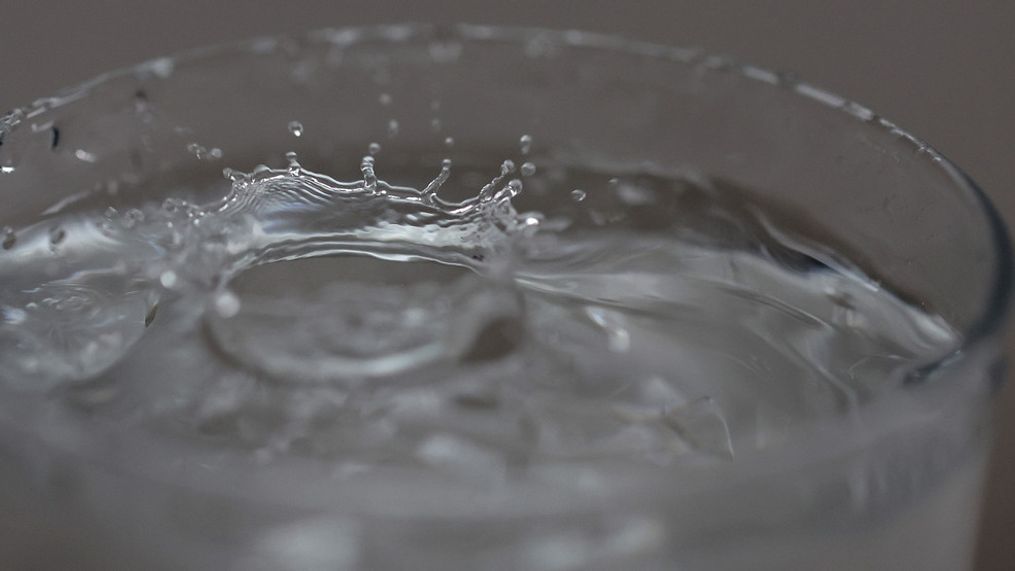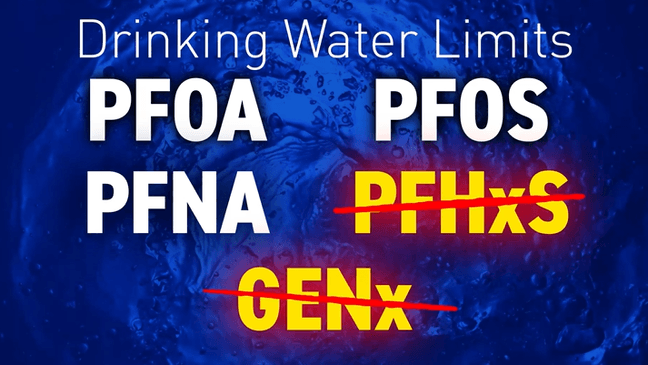EPA cancels limits for several PFAS chemicals in drinking water
WASHINGTON (7News) — More than 150 million Americans drink water contaminated with toxic forever chemicals. Last year, after decades of inaction, the Environmental Protection Agency (EPA) set limits to protect public health. Now, that same agency is undoing those defenses.
Some protections designed to save lives from a dangerous class of chemicals in drinking water are being shut off.
It's a move being called "devastating" by some experts, including Melanie Benesh, Vice President for Government Affairs at the Environmental Working Group.
"Every time we look at these chemicals, we discover that they are more toxic than we had previously thought," Benesh said.
She's been working to protect Americans from PFAS chemicals for years.
Linked to developmental issues in kids, cancer, and reproductive harm, these toxic "forever" chemicals contaminate the water supply from industrial releases, landfills, and firefighting foam.
"There was a strong scientific basis for restricting these, and the result of removing the limitations on these four chemicals is that drinking water is ultimately going to be less safe," said Benesh.
Last year, the EPA set strict limits on some PFAS chemicals, including the most prevalent ones, PFOA and PFOS.
The EPA estimated the move would prevent 9,600 deaths and 30,000 illnesses related to PFAS exposure.
Now, four of those limits are being rescinded under the new EPA. Among them: PFHxS, which faced one of the strictest standards.
Benesh said the limits were set low because the chemical is so dangerous.
"Because of those immune effects, because of reproductive and developmental harms that are associated with exposure to that chemical," Benesh said. "It's a dangerous chemical, and it's a pretty widespread chemical. We found it in a lot of drinking water sources."
We found it too, when we did exclusive testing of tap water in the Washington D.C. region.
In 2022, we tested water from homes to the halls of Congress and even the EPA offices themselves.
We detected PFHxS in residential taps, which was disturbing to Dr Linda Birnbaum, the former Director of the National Institute of Environmental Health Sciences.
“That one [PFHxS] really concerns me because there are growing amounts of animal and human data showing that PFHxS may be every bit as bad as, say PFOS and PFOA, and it lasts in our bodies for a longer period of time," said Birnbaum.
Now, it will be unregulated in drinking water, along with another PFAS chemical called GenX.
GenX is infamous in North Carolina, where PFAS manufacturers dumped it into the Cape Fear River for years, contaminating properties and drinking water supplies.
That drinking water ran through the tap at the home of Beth Markesino and her family. Markesino says she drank copious amounts of water while training for her marathons. It never occurred to her that the water might be contaminated.
She believes GenX is the reason her son died shortly after birth, failing to develop a kidney or a bladder, problems that some studies have linked to PFAS exposure.
"Here I am today," said Markesino. "I should have never ever questioned that my water was the source that killed my son."
The EPA said it is "rescinding" rules for GenX, PFHxS, and two other PFAS chemicals "to ensure that the determinations...follow the legal process laid out in the Safe Drinking Water Act."
We asked the EPA why it didn't leave the rules in place to protect health, while it examines the regulatory process. It did not answer.
Meanwhile, the agency announced it is keeping limits on the two major PFAS chemicals, PFOA and PFOS, but is giving water utilities an extra two years to comply, calling it "common sense flexibility."
You can read how the EPA responded to our questions at the bottom of this article.
Melanie Benesh said the EPA needs to remember its mission.
"It is the Environmental Protection Agency," she said. "It is not the Chemical Industry Support Agency; it is not the Water Utility Accommodation Agency. At the forefront of everything that the EPA should do should be protection of the environment, protection of public health, and taking conservative measures to ensure that people aren't exposed to dangerous levels of these chemicals."
The new EPA Administrator, Lee Zeldin, was very outspoken about PFAS contamination when he was a US Congressman and founded a Congressional task force on the issue. We requested an interview, but his office declined.
Below are the questions we posed to the FDA:
- Upon what scientific basis is the EPA rolling back limits on specifically GenX and PFHxS?
- If there is evidence that the chemicals pose no risk, please provide.
- Please explain the concerns regarding PFHxS, PFNA, and HFPO-DA as it relates to the “legal process laid out in the Safe Drinking Act.”
- Why has the EPA elected not leave the limits in place while evaluating the regulatory process?
- What is the EPA’s justification for extending the compliance deadline for limits on PFOS and PFOA in drinking water?
- If cost is prohibitive to maintaining the deadlines - and a reason for “common sense flexibility” - is the EPA/White House providing funding to help utilities to adhere to the limits?
- How much more funding is needed to make upgrades and install technology to monitor PFAS in water?
- Please provide additional information about the “exemption framework” being worked on by the EPA. Who would be eligible for exemption and why?
Its response is below:
"EPA is committed to addressing PFAS in drinking water and ensuring that regulations issued under the Safe Drinking Water Act follow the law, follow the science, and can be implemented by water systems to strengthen public health protections.
The Trump Administration has conducted a thorough review of the 2024 National Primary Drinking Water Regulation that established requirements for six PFAS. On May 14, EPA announced its intent to:
Keep the current regulations for PFOA and PFOS and un-pause litigation
Extend compliance deadlines for PFOA and PFOS
Pursue proactive technical assistance to water systems—especially in rural and small communities
Use the tools available to the agency to hold polluters accountable
Rescind the regulations and reconsider the regulatory determinations for PFHxS, PFNA, HFPO-DA (commonly known as GenX), and the Hazard Index mixture of these three PFAS plus PFBS
With respect to these four PFAS, the agency determined that the process by which it promulgated the preliminary regulatory determinations simultaneously with the proposed regulation was inappropriate and may not comply with the statutory requirements of Safe Drinking Water Act. Therefore, the Agency intends to rescind the regulations and reconsider these regulatory determinations, ensuring the Agency’s actions adhere to the Safe Drinking Water Act process. While EPA cannot pre-determine the outcome, it is possible that the result could be more stringent requirements.
Additionally, with respect to a federal exemption framework, the Safe Drinking Water Act allows systems additional time to achieve and maintain regulatory compliance with new drinking water regulation, while continuing to provide acceptable levels of public health protection. EPA will develop a federal exemption framework specifically for the PFAS regulation. Exemptions do not allow a water system to violate regulations. Rather, they allow additional time to find a compliance solution (i.e., treatment or a new source).
This approach to regulatory revisions, combined with our commitment to pursue proactive technical assistance to water systems and use available tools to hold polluters accountable, prioritizes reducing exposure to PFAS in drinking water. Rather than issue violations and collect fees that don’t benefit public health, EPA intends to use flexibilities provided in the Act to give more time for compliance while partnering with water systems to reduce PFAS exposure as quickly as feasible. At the same time, we will take action to reduce PFAS in sources of drinking water while supporting state-lead and local actions to protect drinking water where PFAS is a public health concern."




